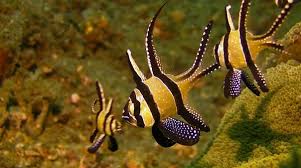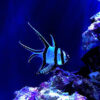Exploring the Symbolism of Dragons in Traditional Chinese Paintings
The dragon (lóng, 龙) is one of the most powerful and enduring symbols in Chinese culture. In traditional Chinese paintings, the dragon represents imperial power, divine protection, cosmic forces, and spiritual balance. Across centuries, artists have depicted dragons in various styles, colors, and settings, each carrying deep meanings influenced by Taoism, Confucianism, and Buddhist philosophy.
This article delves into the symbolism, artistic techniques, and historical evolution of dragons in traditional Chinese paintings, highlighting their cultural significance and influence on Chinese art.
I. The Dragon as a Symbol in Chinese Culture
1. The Chinese Dragon vs. Western Dragons
Unlike the fire-breathing, winged dragons of Western mythology, Chinese dragons are benevolent, serpentine creatures that control rain, rivers, and celestial forces. They are revered as symbols of wisdom, strength, and good fortune rather than destruction.
- Western dragons: Often depicted as aggressive, with large wings and reptilian features, guarding treasures or fighting heroes.
- Chinese dragons: Represent harmony, cosmic balance, and royal authority, often seen flying in the clouds or emerging from water.
The artistic representation of dragons in Chinese paintings reflects these cultural differences, emphasizing grace, movement, and spiritual energy (Qi, 气).
2. The Five Types of Chinese Dragons in Art
In traditional Chinese art, dragons are categorized into different types, each symbolizing specific forces of nature and spiritual elements:
- Tianlong (天龙) – Celestial Dragons:
- Guardians of the heavens, often depicted in imperial paintings.
- Associated with the Emperor and divine rule.
- Shenlong (神龙) – Spiritual Dragons:
- Controllers of rain and wind, seen in paintings related to agriculture and prosperity.
- Frequently depicted as emerging from storm clouds.
- Fucanglong (伏藏龙) – Treasure Dragons:
- Guardians of hidden treasures, symbolizing wealth and abundance.
- Often painted with jewels or gold.
- Dilong (地龙) – Earth Dragons:
- Rulers of rivers, lakes, and mountains, appearing in landscape paintings.
- Depicted coiling around rocks or flowing with rivers.
- Qinglong (青龙) – The Azure Dragon:
- One of the Four Symbols of Chinese mythology, representing the East and Spring.
- Seen in temple murals and feng shui paintings.
Each of these dragons carries distinct meanings in paintings, reinforcing their cosmic and spiritual importance.
II. The Evolution of Dragon Imagery in Traditional Chinese Paintings
1. Han Dynasty (206 BCE – 220 CE): Early Dragon Depictions
The earliest dragon images appear in Han Dynasty tomb paintings and silk scrolls. These early representations are:
- Simple and linear, often coiled and intertwined with clouds.
- Used in funerary art, symbolizing the soul’s journey to the afterlife.
Han artists painted dragons with snake-like bodies, deer antlers, and fish scales, a style that became the standard dragon form in Chinese art.
2. Tang Dynasty (618–907 CE): The Dragon as an Imperial Symbol
During the Tang Dynasty, dragons became more elaborate and colorful, symbolizing imperial power.
- The Emperor was regarded as the Son of the Dragon (龙的传人, Lóng de chuánrén), so dragon paintings often featured golden dragons with five claws, representing royalty.
- Artists developed detailed brush techniques, using fine ink strokes to depict clouds swirling around dragons, emphasizing their mystical nature.
Famous artworks from this period often include dragons alongside phoenixes (凤, fèng), representing the balance of yin and yang.
3. Song Dynasty (960–1279 CE): The Rise of Literati Dragon Paintings
The Song Dynasty saw a shift from imperial dragon imagery to philosophical interpretations of dragons in art.
- Scholar-artists (文人, Wénrén) used minimalist ink wash techniques to depict dragons hidden within mist and mountains, symbolizing mysticism and wisdom.
- The dragon became a metaphor for the unseen forces of nature, blending with Taoist and Zen Buddhist ideas of emptiness and fluidity.
Famous paintings from this period include “Nine Dragons” (九龙图, Jiǔ Lóng Tú) by Chen Rong, which portrays dragons emerging from clouds and waves, expressing the power of Qi energy.
4. Ming and Qing Dynasties (1368–1912): Decorative and Symbolic Dragons
During the Ming and Qing Dynasties, dragon paintings became more vibrant and decorative, reflecting:
- Imperial power, with dragons appearing on palace walls, scrolls, and ceramics.
- Festive celebrations, where dragons were painted in red and gold, symbolizing prosperity.
- Folk paintings, where dragons were depicted in playful, colorful styles, emphasizing good fortune.
Artists during this time perfected the gongbi (工笔) meticulous painting technique, creating lifelike dragons with intricate details.
III. Artistic Techniques Used in Dragon Paintings
1. The Importance of Brush Strokes in Dragon Depictions
Chinese brush painting uses dynamic strokes to capture the fluidity and movement of dragons:
- “Flying White” (飞白, Fēibái) technique: Creates the illusion of speed and wind.
- “Bone Method” (骨法用笔, Gǔfǎ yòng bǐ): Produces strong, structured dragon forms.
The fluidity of ink mirrors the dragon’s connection with water and the cosmos.
2. The Use of Colors in Dragon Paintings
Each dragon color in traditional Chinese paintings carries a distinct meaning:
- Gold Dragons: Symbolize imperial power and divine authority.
- Red Dragons: Represent good luck and festive joy.
- Blue or Green Dragons: Associated with nature, growth, and harmony.
- Black Dragons: Represent storms and change, often appearing in battle scenes.
The choice of colors influences the emotional impact of the artwork.
3. The Relationship Between Dragons and Natural Elements
Dragons are often depicted emerging from water, hidden in mist, or soaring among clouds, symbolizing their connection with natural forces.
- Water Dragon Paintings: Represent prosperity, as dragons bring rain for agriculture.
- Cloud and Sky Dragons: Symbolize spiritual ascent and cosmic balance.
- Mountain Dragons: Reflect the fusion of earthly and divine energy.
These elements emphasize the harmony between humans, nature, and the divine.
Conclusion: The Timeless Presence of Dragons in Chinese Art
The dragon’s presence in traditional Chinese paintings is not just an artistic motif—it is a profound symbol of cosmic order, imperial power, and spiritual wisdom. From ancient tomb paintings to imperial scrolls and modern interpretations, the dragon remains a central figure in Chinese visual culture.
Even today, Chinese artists continue to explore the dragon’s symbolism, blending traditional techniques with modern styles. Whether appearing in calligraphy, murals, or contemporary digital art, the dragon remains a timeless representation of strength, prosperity, and harmony—a legacy that continues to inspire generations.


